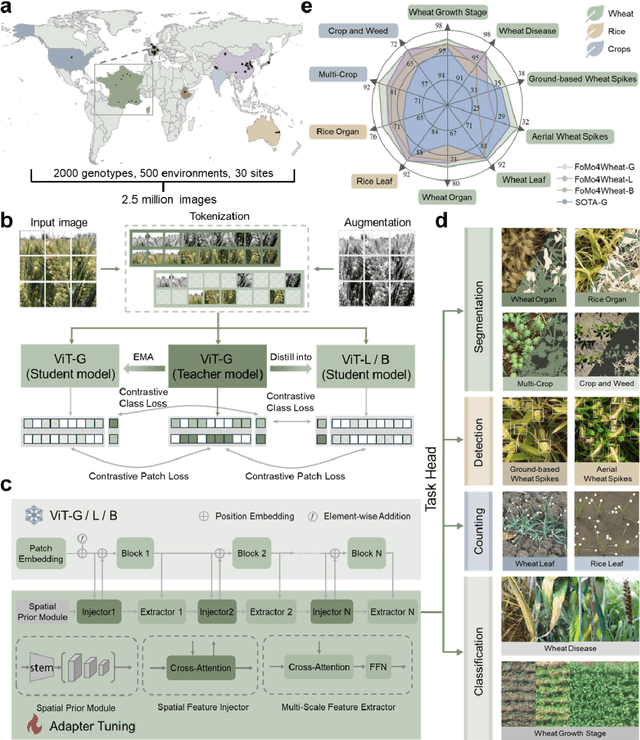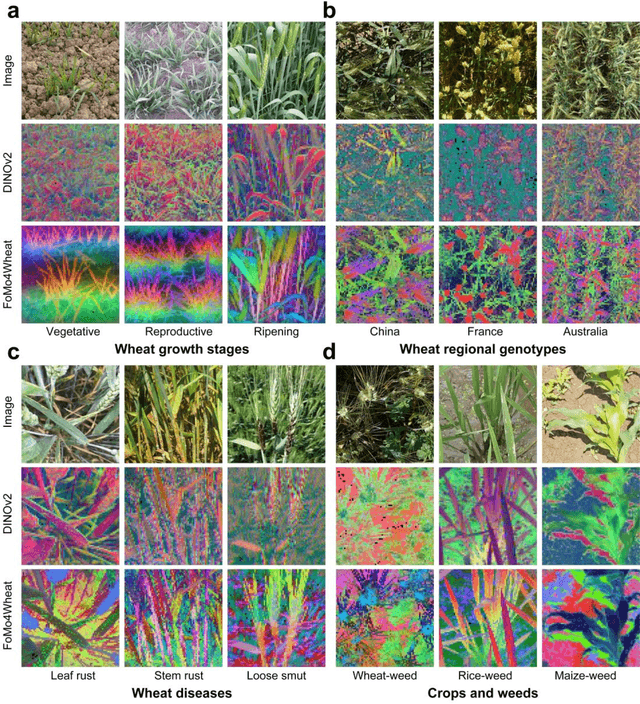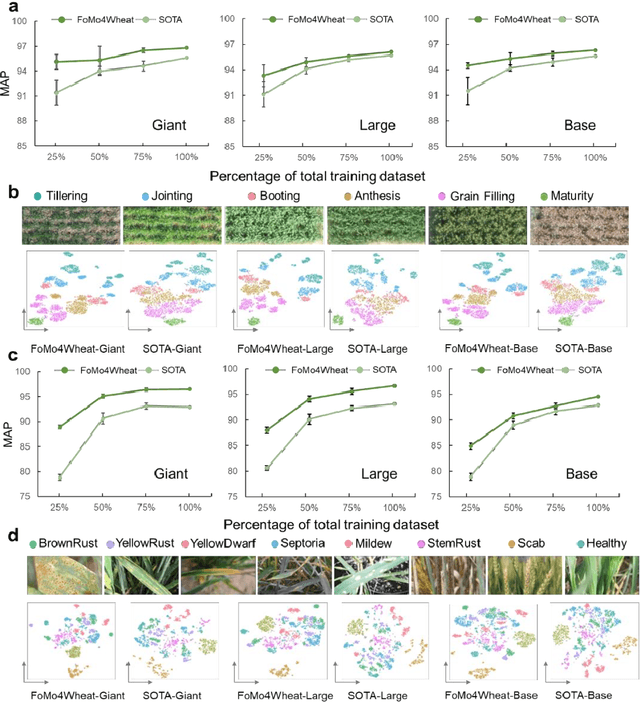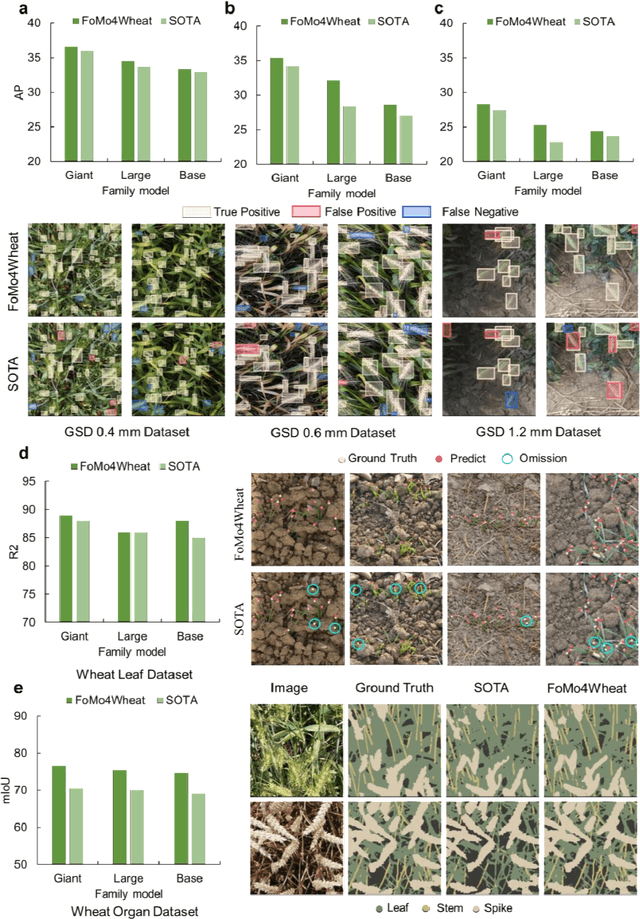Bing Han
Towards Responsible Evaluation for Text-to-Speech
Oct 08, 2025Abstract:Recent advances in text-to-speech (TTS) technology have enabled systems to produce human-indistinguishable speech, bringing benefits across accessibility, content creation, and human-computer interaction. However, current evaluation practices are increasingly inadequate for capturing the full range of capabilities, limitations, and societal implications. This position paper introduces the concept of Responsible Evaluation and argues that it is essential and urgent for the next phase of TTS development, structured through three progressive levels: (1) ensuring the faithful and accurate reflection of a model's true capabilities, with more robust, discriminative, and comprehensive objective and subjective scoring methodologies; (2) enabling comparability, standardization, and transferability through standardized benchmarks, transparent reporting, and transferable evaluation metrics; and (3) assessing and mitigating ethical risks associated with forgery, misuse, privacy violations, and security vulnerabilities. Through this concept, we critically examine current evaluation practices, identify systemic shortcomings, and propose actionable recommendations. We hope this concept of Responsible Evaluation will foster more trustworthy and reliable TTS technology and guide its development toward ethically sound and societally beneficial applications.
FoMo4Wheat: Toward reliable crop vision foundation models with globally curated data
Sep 08, 2025



Abstract:Vision-driven field monitoring is central to digital agriculture, yet models built on general-domain pretrained backbones often fail to generalize across tasks, owing to the interaction of fine, variable canopy structures with fluctuating field conditions. We present FoMo4Wheat, one of the first crop-domain vision foundation model pretrained with self-supervision on ImAg4Wheat, the largest and most diverse wheat image dataset to date (2.5 million high-resolution images collected over a decade at 30 global sites, spanning >2,000 genotypes and >500 environmental conditions). This wheat-specific pretraining yields representations that are robust for wheat and transferable to other crops and weeds. Across ten in-field vision tasks at canopy and organ levels, FoMo4Wheat models consistently outperform state-of-the-art models pretrained on general-domain dataset. These results demonstrate the value of crop-specific foundation models for reliable in-field perception and chart a path toward a universal crop foundation model with cross-species and cross-task capabilities. FoMo4Wheat models and the ImAg4Wheat dataset are publicly available online: https://github.com/PheniX-Lab/FoMo4Wheat and https://huggingface.co/PheniX-Lab/FoMo4Wheat. The demonstration website is: https://fomo4wheat.phenix-lab.com/.
HyperDiff: Hypergraph Guided Diffusion Model for 3D Human Pose Estimation
Aug 20, 2025Abstract:Monocular 3D human pose estimation (HPE) often encounters challenges such as depth ambiguity and occlusion during the 2D-to-3D lifting process. Additionally, traditional methods may overlook multi-scale skeleton features when utilizing skeleton structure information, which can negatively impact the accuracy of pose estimation. To address these challenges, this paper introduces a novel 3D pose estimation method, HyperDiff, which integrates diffusion models with HyperGCN. The diffusion model effectively captures data uncertainty, alleviating depth ambiguity and occlusion. Meanwhile, HyperGCN, serving as a denoiser, employs multi-granularity structures to accurately model high-order correlations between joints. This improves the model's denoising capability especially for complex poses. Experimental results demonstrate that HyperDiff achieves state-of-the-art performance on the Human3.6M and MPI-INF-3DHP datasets and can flexibly adapt to varying computational resources to balance performance and efficiency.
Exploring Self-Supervised Audio Models for Generalized Anomalous Sound Detection
Aug 17, 2025Abstract:Machine anomalous sound detection (ASD) is a valuable technique across various applications. However, its generalization performance is often limited due to challenges in data collection and the complexity of acoustic environments. Inspired by the success of large pre-trained models in numerous fields, this paper introduces a robust ASD model that leverages self-supervised pre-trained models trained on large-scale speech and audio datasets. Although there are inconsistencies between the pre-training datasets and the ASD task, our findings indicate that pre-training still provides substantial benefits for ASD. To mitigate overfitting and retain learned knowledge when fine-tuning with limited data, we explore Fully-Connected Low-Rank Adaptation (LoRA) as an alternative to full fine-tuning. Additionally, we propose a Machine-aware Group Adapter module, which enables the model to capture differences between various machines within a unified framework, thereby enhancing the generalization performance of ASD systems. To address the challenge of missing attribute labels, we design a novel objective function that dynamically clusters unattributed data using vector quantization and optimizes through a dual-level contrastive learning loss. The proposed methods are evaluated on all benchmark datasets, including the DCASE 2020-2024 five ASD challenges, and the experimental results show significant improvements of our new approach and demonstrate the effectiveness of our proposed strategies.
FISHER: A Foundation Model for Multi-Modal Industrial Signal Comprehensive Representation
Jul 22, 2025Abstract:With the rapid deployment of SCADA systems, how to effectively analyze industrial signals and detect abnormal states is an urgent need for the industry. Due to the significant heterogeneity of these signals, which we summarize as the M5 problem, previous works only focus on small sub-problems and employ specialized models, failing to utilize the synergies between modalities and the powerful scaling law. However, we argue that the M5 signals can be modeled in a unified manner due to the intrinsic similarity. As a result, we propose FISHER, a Foundation model for multi-modal Industrial Signal compreHEnsive Representation. To support arbitrary sampling rates, FISHER considers the increment of sampling rate as the concatenation of sub-band information. Specifically, FISHER takes the STFT sub-band as the modeling unit and adopts a teacher student SSL framework for pre-training. We also develop the RMIS benchmark, which evaluates the representations of M5 industrial signals on multiple health management tasks. Compared with top SSL models, FISHER showcases versatile and outstanding capabilities with a general performance gain up to 5.03%, along with much more efficient scaling curves. We also investigate the scaling law on downstream tasks and derive potential avenues for future works. FISHER is now open-sourced on https://github.com/jianganbai/FISHER
Zero-Shot Streaming Text to Speech Synthesis with Transducer and Auto-Regressive Modeling
May 26, 2025Abstract:Zero-shot streaming text-to-speech is an important research topic in human-computer interaction. Existing methods primarily use a lookahead mechanism, relying on future text to achieve natural streaming speech synthesis, which introduces high processing latency. To address this issue, we propose SMLLE, a streaming framework for generating high-quality speech frame-by-frame. SMLLE employs a Transducer to convert text into semantic tokens in real time while simultaneously obtaining duration alignment information. The combined outputs are then fed into a fully autoregressive (AR) streaming model to reconstruct mel-spectrograms. To further stabilize the generation process, we design a Delete < Bos > Mechanism that allows the AR model to access future text introducing as minimal delay as possible. Experimental results suggest that the SMLLE outperforms current streaming TTS methods and achieves comparable performance over sentence-level TTS systems. Samples are available on https://anonymous.4open.science/w/demo_page-48B7/.
Redefining Superalignment: From Weak-to-Strong Alignment to Human-AI Co-Alignment to Sustainable Symbiotic Society
Apr 24, 2025Abstract:Artificial Intelligence (AI) systems are becoming increasingly powerful and autonomous, and may progress to surpass human intelligence levels, namely Artificial Superintelligence (ASI). During the progression from AI to ASI, it may exceed human control, violate human values, and even lead to irreversible catastrophic consequences in extreme cases. This gives rise to a pressing issue that needs to be addressed: superalignment, ensuring that AI systems much smarter than humans, remain aligned with human (compatible) intentions and values. Existing scalable oversight and weak-to-strong generalization methods may prove substantially infeasible and inadequate when facing ASI. We must explore safer and more pluralistic frameworks and approaches for superalignment. In this paper, we redefine superalignment as the human-AI co-alignment towards a sustainable symbiotic society, and highlight a framework that integrates external oversight and intrinsic proactive alignment. External oversight superalignment should be grounded in human-centered ultimate decision, supplemented by interpretable automated evaluation and correction, to achieve continuous alignment with humanity's evolving values. Intrinsic proactive superalignment is rooted in a profound understanding of the self, others, and society, integrating self-awareness, self-reflection, and empathy to spontaneously infer human intentions, distinguishing good from evil and proactively considering human well-being, ultimately attaining human-AI co-alignment through iterative interaction. The integration of externally-driven oversight with intrinsically-driven proactive alignment empowers sustainable symbiotic societies through human-AI co-alignment, paving the way for achieving safe and beneficial AGI and ASI for good, for human, and for a symbiotic ecology.
Continual Learning of Multiple Cognitive Functions with Brain-inspired Temporal Development Mechanism
Apr 08, 2025Abstract:Cognitive functions in current artificial intelligence networks are tied to the exponential increase in network scale, whereas the human brain can continuously learn hundreds of cognitive functions with remarkably low energy consumption. This advantage is in part due to the brain cross-regional temporal development mechanisms, where the progressive formation, reorganization, and pruning of connections from basic to advanced regions, facilitate knowledge transfer and prevent network redundancy. Inspired by these, we propose the Continual Learning of Multiple Cognitive Functions with Brain-inspired Temporal Development Mechanism(TD-MCL), enabling cognitive enhancement from simple to complex in Perception-Motor-Interaction(PMI) multiple cognitive task scenarios. The TD-MCL model proposes the sequential evolution of long-range connections between different cognitive modules to promote positive knowledge transfer, while using feedback-guided local connection inhibition and pruning to effectively eliminate redundancies in previous tasks, reducing energy consumption while preserving acquired knowledge. Experiments show that the proposed method can achieve continual learning capabilities while reducing network scale, without introducing regularization, replay, or freezing strategies, and achieving superior accuracy on new tasks compared to direct learning. The proposed method shows that the brain's developmental mechanisms offer a valuable reference for exploring biologically plausible, low-energy enhancements of general cognitive abilities.
Socratic: Enhancing Human Teamwork via AI-enabled Coaching
Feb 24, 2025Abstract:Coaches are vital for effective collaboration, but cost and resource constraints often limit their availability during real-world tasks. This limitation poses serious challenges in life-critical domains that rely on effective teamwork, such as healthcare and disaster response. To address this gap, we propose and realize an innovative application of AI: task-time team coaching. Specifically, we introduce Socratic, a novel AI system that complements human coaches by providing real-time guidance during task execution. Socratic monitors team behavior, detects misalignments in team members' shared understanding, and delivers automated interventions to improve team performance. We validated Socratic through two human subject experiments involving dyadic collaboration. The results demonstrate that the system significantly enhances team performance with minimal interventions. Participants also perceived Socratic as helpful and trustworthy, supporting its potential for adoption. Our findings also suggest promising directions both for AI research and its practical applications to enhance human teamwork.
Multi-Class Segmentation of Aortic Branches and Zones in Computed Tomography Angiography: The AortaSeg24 Challenge
Feb 07, 2025



Abstract:Multi-class segmentation of the aorta in computed tomography angiography (CTA) scans is essential for diagnosing and planning complex endovascular treatments for patients with aortic dissections. However, existing methods reduce aortic segmentation to a binary problem, limiting their ability to measure diameters across different branches and zones. Furthermore, no open-source dataset is currently available to support the development of multi-class aortic segmentation methods. To address this gap, we organized the AortaSeg24 MICCAI Challenge, introducing the first dataset of 100 CTA volumes annotated for 23 clinically relevant aortic branches and zones. This dataset was designed to facilitate both model development and validation. The challenge attracted 121 teams worldwide, with participants leveraging state-of-the-art frameworks such as nnU-Net and exploring novel techniques, including cascaded models, data augmentation strategies, and custom loss functions. We evaluated the submitted algorithms using the Dice Similarity Coefficient (DSC) and Normalized Surface Distance (NSD), highlighting the approaches adopted by the top five performing teams. This paper presents the challenge design, dataset details, evaluation metrics, and an in-depth analysis of the top-performing algorithms. The annotated dataset, evaluation code, and implementations of the leading methods are publicly available to support further research. All resources can be accessed at https://aortaseg24.grand-challenge.org.
 Add to Chrome
Add to Chrome Add to Firefox
Add to Firefox Add to Edge
Add to Edge